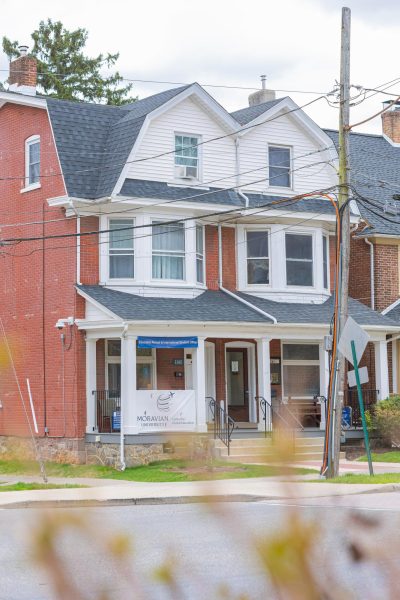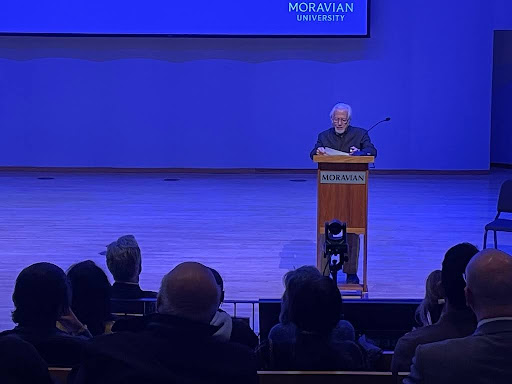The Asian Student Union Responds to Rise in Anti-Asian Attacks
After many intimate discussions in ASU about the rise of Asian hate crimes, it’s become evident that Asian-Americans feel invisible in this country. The racism we face has often been severely gaslit and it took a slew of racist tragedies before people outside of our community acknowledged us.
The reality is that racism against Asians and xenophobia has existed long before COVID-19. From the Chinese Exclusion Act to the Japanese Internment Camps during the Second World War, Asian-Americans have always been perceived as foreign and have been used as scapegoats. In the 1970s and 80s, there were violent attacks by paramilitary KKK members against Refugee Vietnamese Fishers in Texas.
Asian racism is not a thing of the past. We are severely underrepresented in the media. And when we are seen in the media, our women are usually portrayed as the hypersexual seductress or as the skilled martial arts villain. Our men are never the protagonists in movies, just the nerdy sidekick.
Despite our long history in this country, we are invisible and pigeon-holed into stereotypes. Not until recently at least. COVID-19 has brought a new wave of anti-Asian sentiment to the U.S. We are once again the scapegoats for a situation that is out of our hands.
This is what’s making people pay attention to Asian-Americans, not our achievements, not our history of racial discrimination from this country, it was how we (as a population) were responsible for a “once-in-a-lifetime” pandemic (ignoring SARS, MERS, Ebola, and Swine Flu in the past 21 years alone).
People are conflating Asian-Americans as one monolithic group (which we aren’t). It’s problematic to do this because many people don’t even try to make the distinction between Asian-Americans and Asians from the mainland. Why are we responsible for China’s rising political power? Why must we bear the burden of America’s growing paranoia towards China? Why don’t people realize that not all Asians are Chinese? And why don’t they care to learn that Asia is extremely ethnically diverse? There are around 48 ethnicities in Asia. We are not a monolith.
Our struggle has been ignored for so long because Asians are seen as the model minority. It is true that many Asian-Americans are doctors, lawyers, etc., but not all of us. The Asian victims of the Atlanta shooting were all service workers. It’s extremely problematic to assume that all Asian-Americans work high-paying, white collar jobs.
Secondly, the model minority myth is also inaccurate. There are huge income disparities in the Asian community when it is broken down by ethnicity. The model minority myth not only gaslights racism against Asians, but also racism against all people of color (POC). It’s often used as a weapon to frame other POC as lazy complainers because, “If Asian people can be successful in this country, why can’t other people of color do the same?”
“I have experienced far more racism on Moravian’s campus than back home, but thankfully it isn’t the violent kind but rather the stereotypes mainstream society paints of Asians, like being good at math or using chopsticks all the damn time,” said Orion Sun, an Asian-American Moravian student. “In my 3 years at this school, I have had people both ironically and unironically ask me for help with their math homework (‘because [I’m] Asian.’ I wish I was joking) and say stuff in the most offensive accent possible to greet me like I’m some Kung Fu Master or whatever. Then there are the stuff like questions about Asian countries I can’t answer because I have no knowledge outside of it besides it is a country in Asia (like that cupping was a thing practiced in Laos, which keep in mind, I’m ethnically Han Chinese). Of course, there are the innocent questions like ‘where am I really from’ or ‘what Chinese food do you eat?’ that are asked from a place of ignorance and curiosity rather than malice. There is a fine line between ignorance and outright racism and that fine line is being eroded with this pandemic. Don’t get me wrong, this school is also great and the students are great and there are those who are standing against racism but it is not the shining school of equality some would like to paint it as. As with most things, the reality is murky and nuanced.”
The reality is that for Asian-Americans, we are stuck in a place where we see and experience racist microaggressions, comments, verbal and physical attacks, but are not acknowledged outside our own community.
We saw a clear example of this here on campus this year. The Atlanta shooting that occurred in March deeply saddened ASU, but it was almost even sadder to not be acknowledged by Moravian’s administration. None of our professors reached out to us to check on us. We received no emails about the administration declaring solidarity with us aside from the DEI Office.
And when The Comenian wrote an article about the rise of anti-Asian hate crimes, none of the members of The Comenian interviewed our members, nor did any of them come to our meetings following the Atlanta shooting. We understand that the piece written was a personal article, but its commentary on the shooting, and Asian racism in general, was not representative of what was discussed in ASU meetings.
We don’t even know if the Moravian administration saw the Atlanta spa shootings as a racially motivated crime. The tragedy at Atlanta was racially motivated, and to ignore that is another form of racial gaslighting. On a national and local level, we are invisible. Ignoring racism is just another form of racism, one that is passive in nature.
Since then, we have had meetings with administrators and faculty where we had discussions about our experiences and expressed our grievances, and we greatly appreciate their willingness to listen and understand.
However, this cannot always be the only way minority students on campus are acknowledged, after a tragedy and after we explicitly state that we are hurt. It is not the job of only marginalized students to protect ourselves and fight for our own equality. It is not the job of only the Office of Diversity and Inclusion to help us in this fight.
These issues are of utmost importance to us, but we are also students with coursework, extracurriculars, jobs, families and busy lives. We are spread thin enough already, and when the work of fighting for equality and protection also falls only on our shoulders, it wears us down even more.
We cannot do it alone. We ask that the college as a whole continues to work towards empathy, the acknowledgement of the experiences of Asian students, as well as all minority students on this campus, and willingness to protect and amplify our voices. Remember us after COVID is over.
Note: The Comenian did not contact ASU because Nick Wan’s piece is a personal essay, not a reported news article.








Leah Naso • May 3, 2021 at 10:00 am
Thank you to the members of ASU for the courage to share their thoughts and experiences here. Although our work is ongoing and sometimes feels slow, please know that you are valued and supported!
Kin Cheung • Apr 30, 2021 at 11:39 am
This article, the vigil you held for the March Atlanta area shooting victims, and your labor towards equity are reasons why you thoroughly deserve the 2021 ODK National Leadership Honor Society Award for Excellence in Diversity! Congratulations Asian Student Union, I am so proud of you!
To elaborate on your point regarding diversity within the 48 countries of Asia, there are 56 officially recognized ethnicities within just one Asian country (China), and hundreds of languages used within one Asian country (India), not to mention the population in Asia makes up more than half the world. Asian Pacific Islander Desi Americans (APIDA) are just as diverse and fully American.